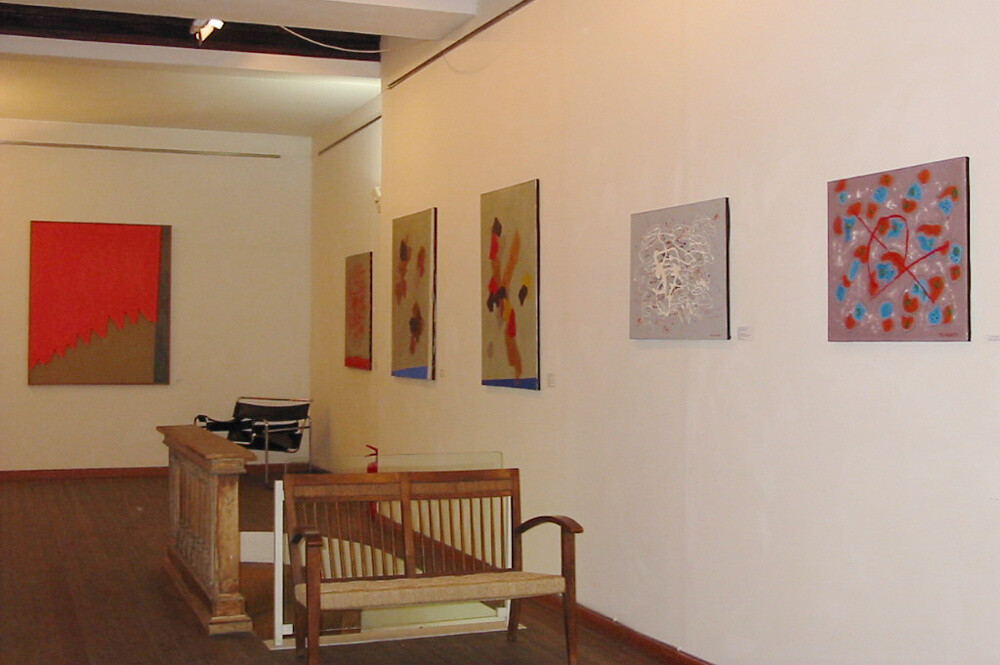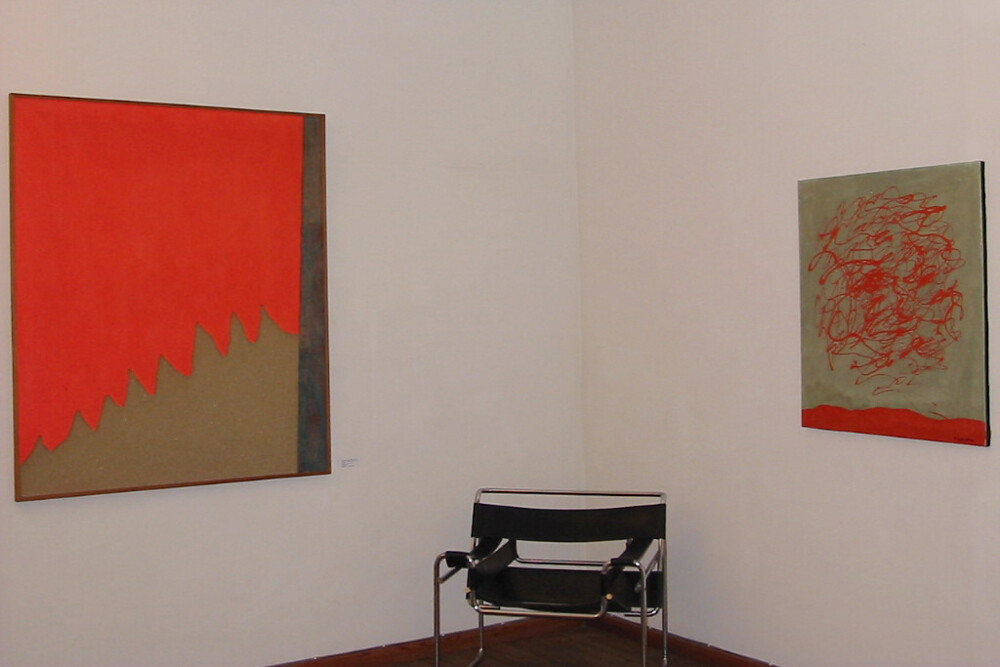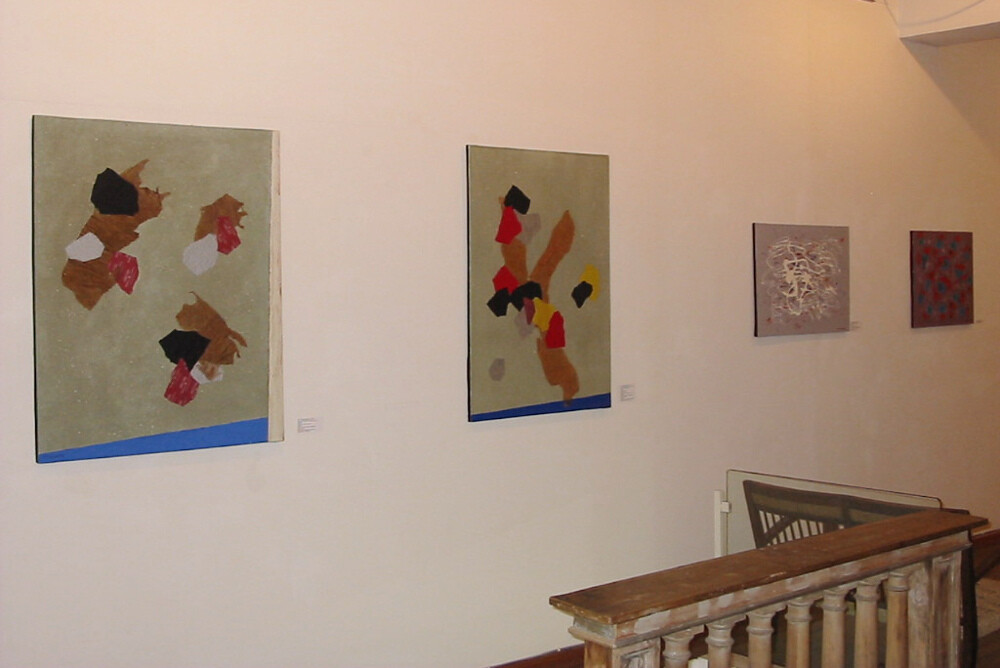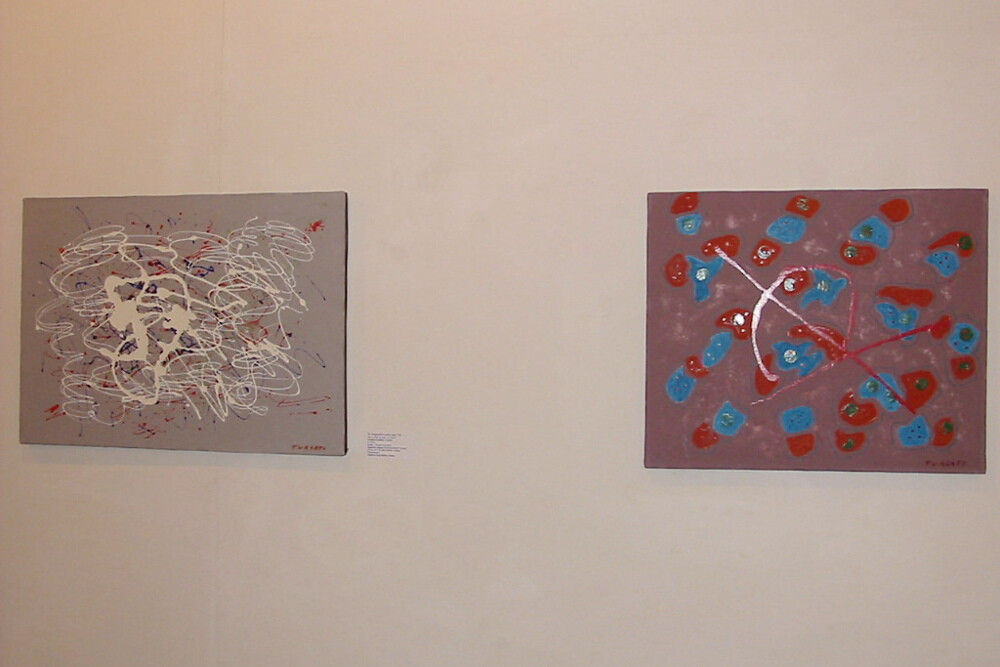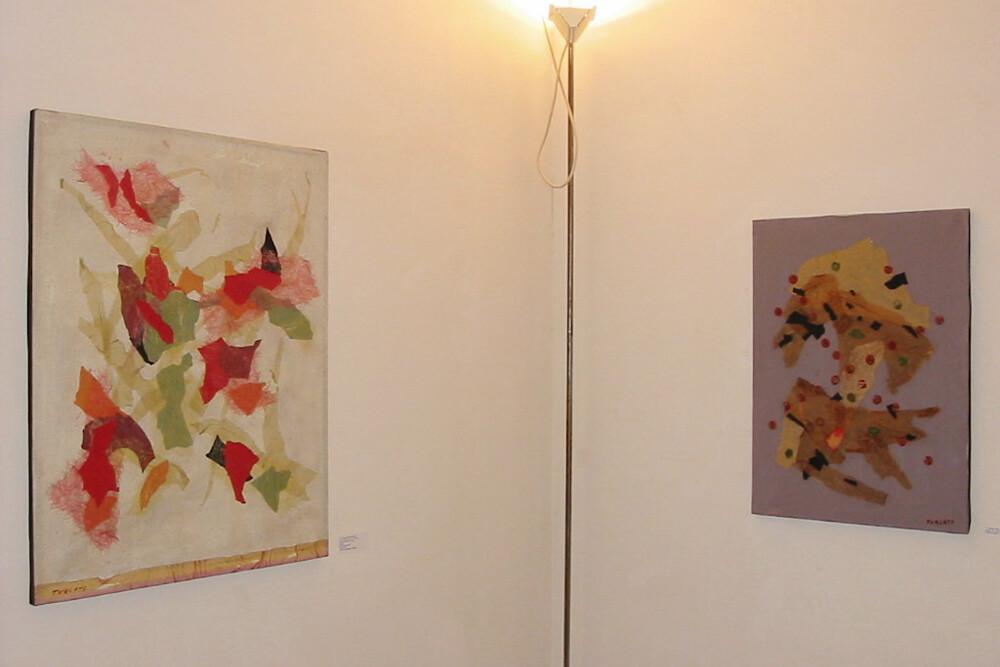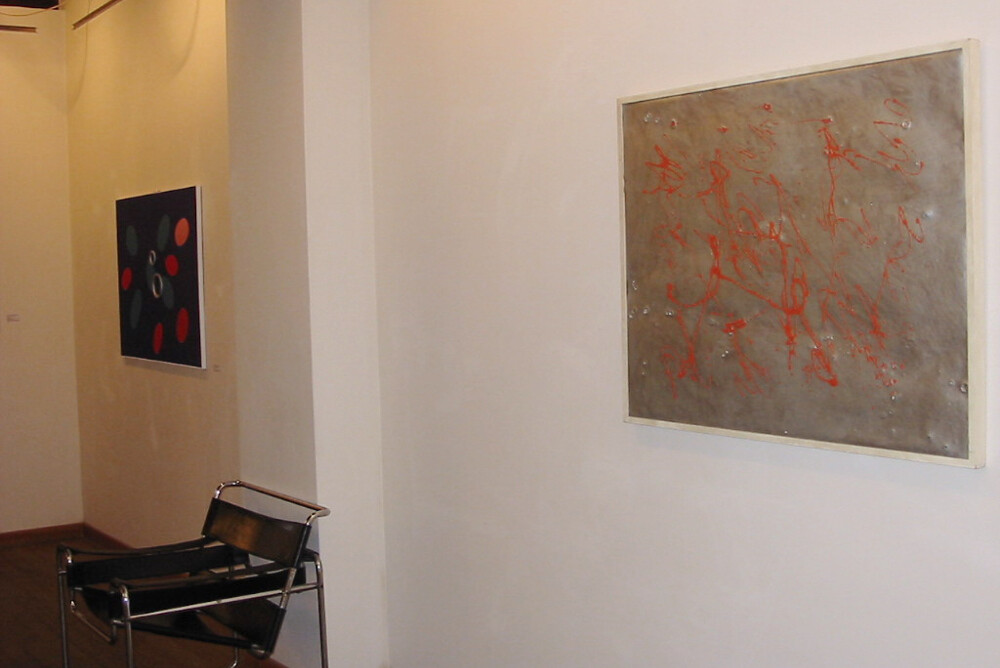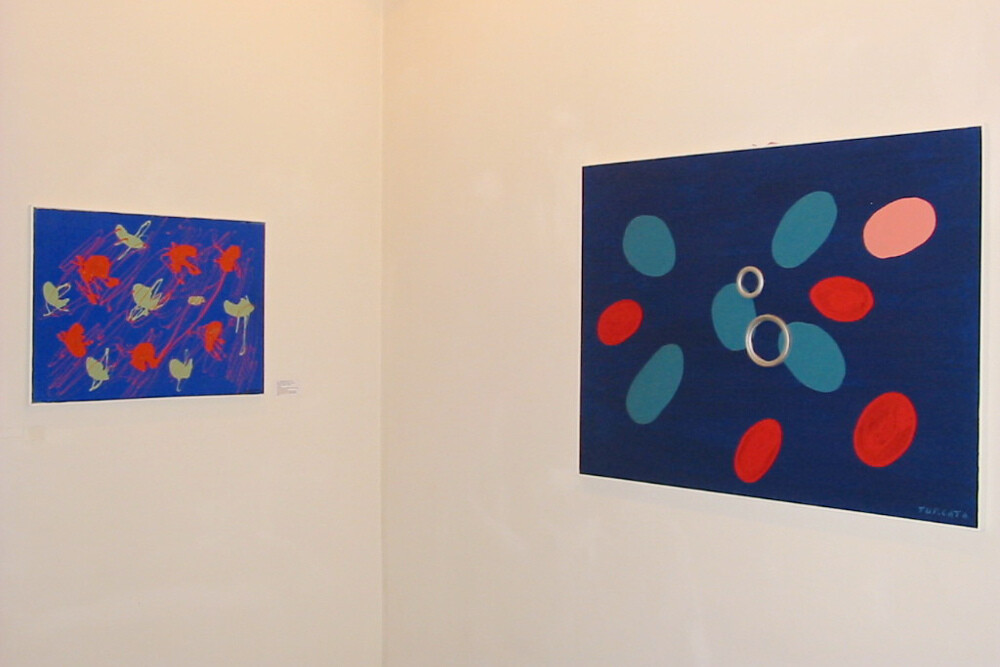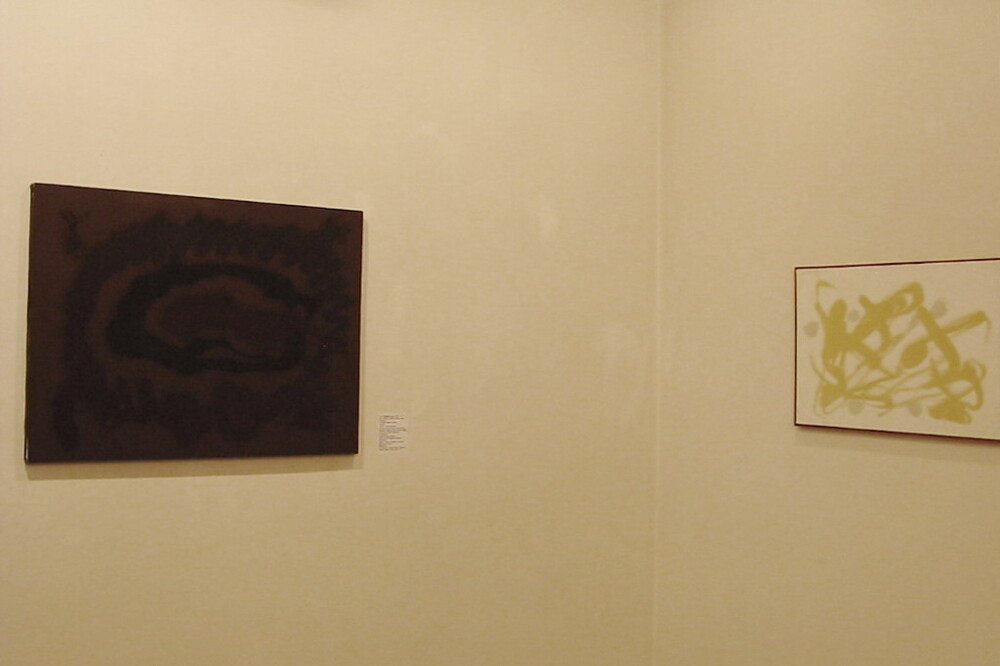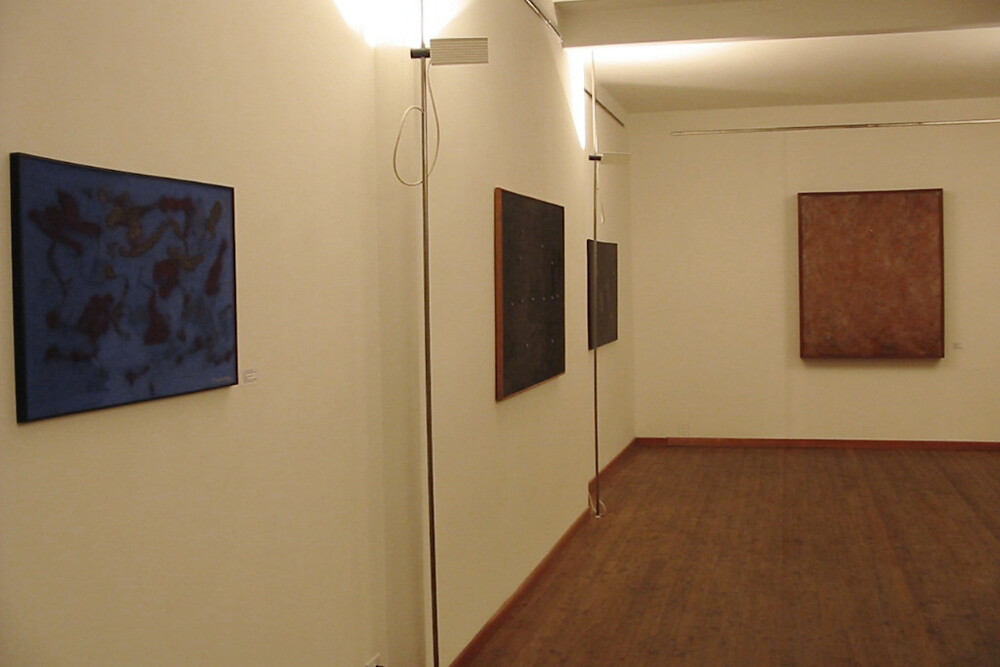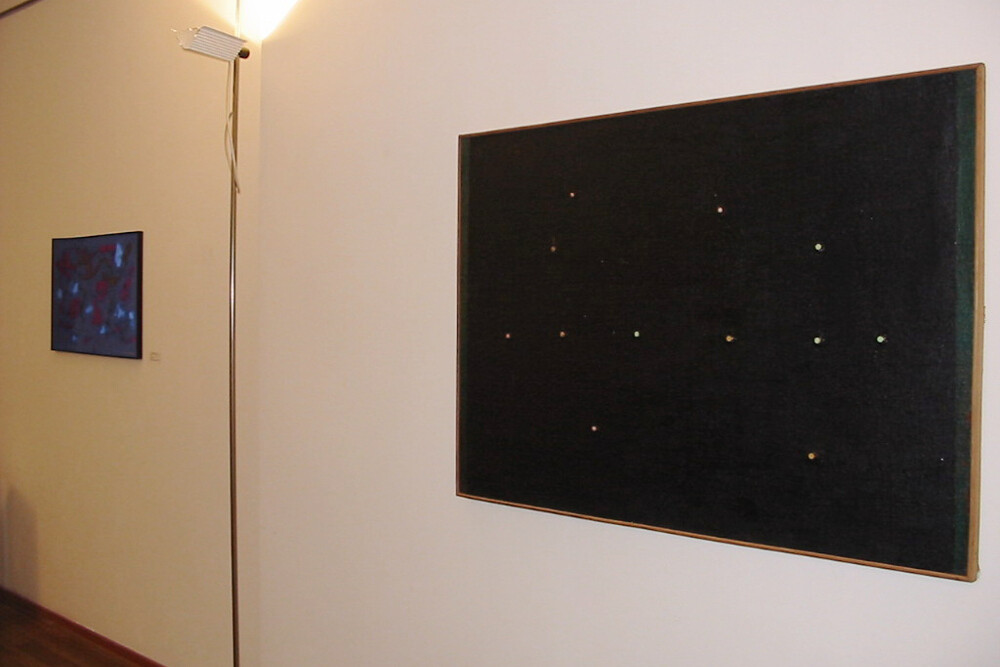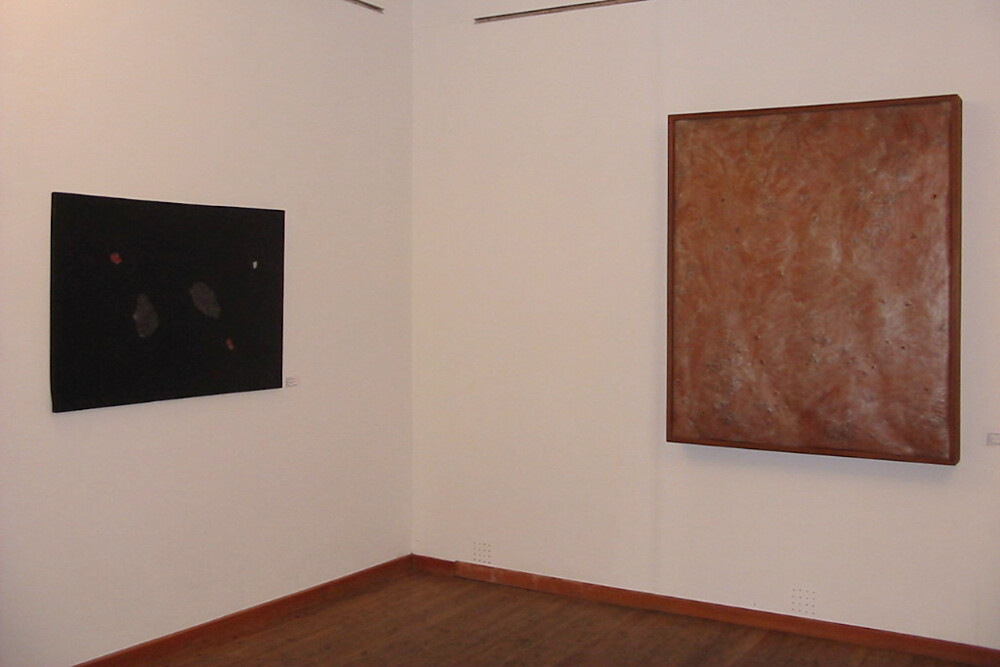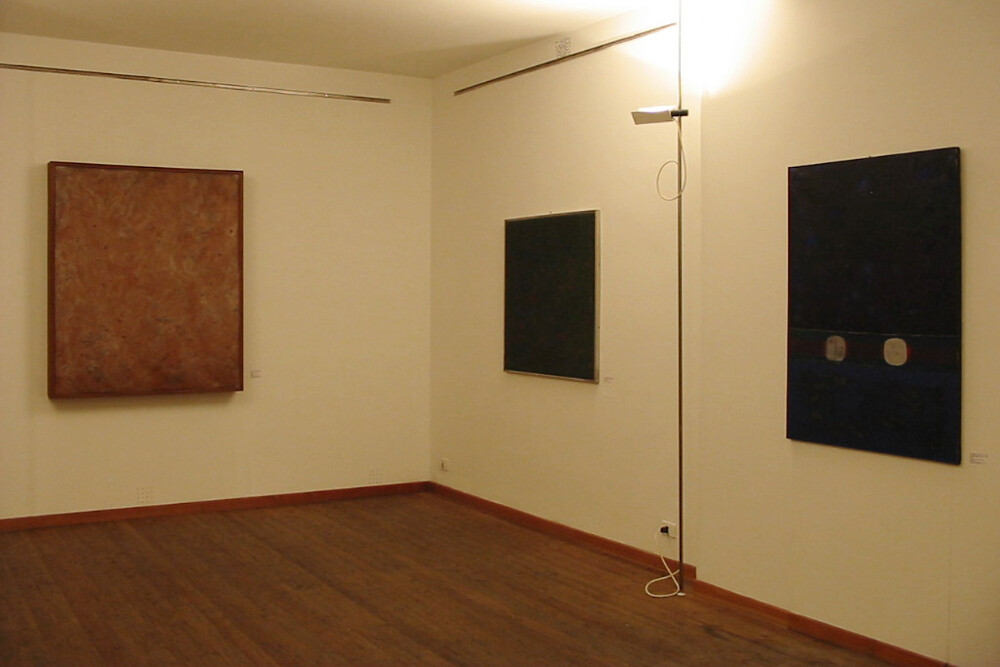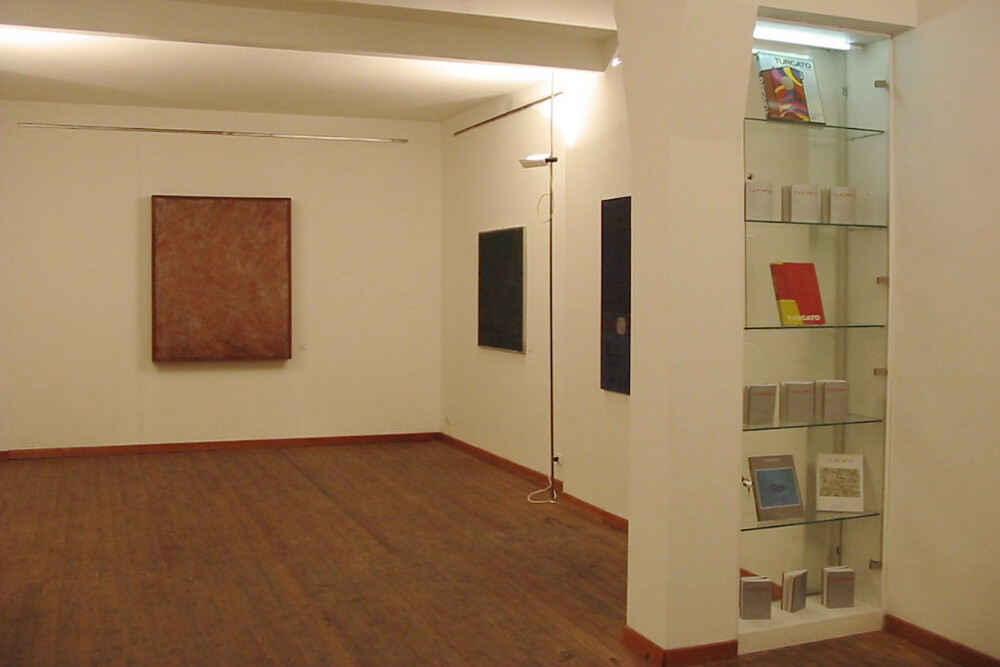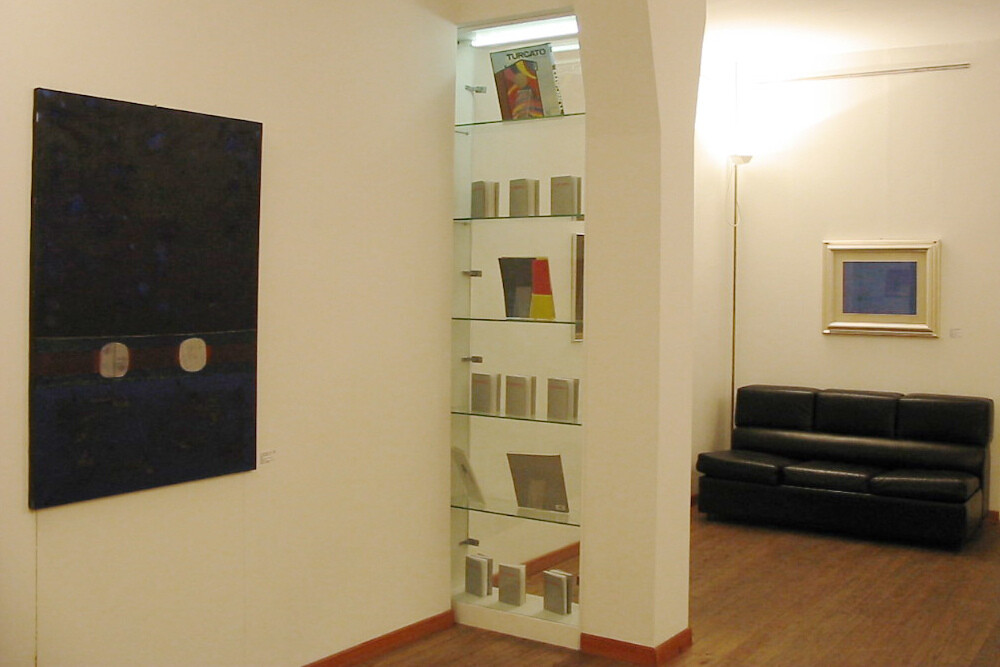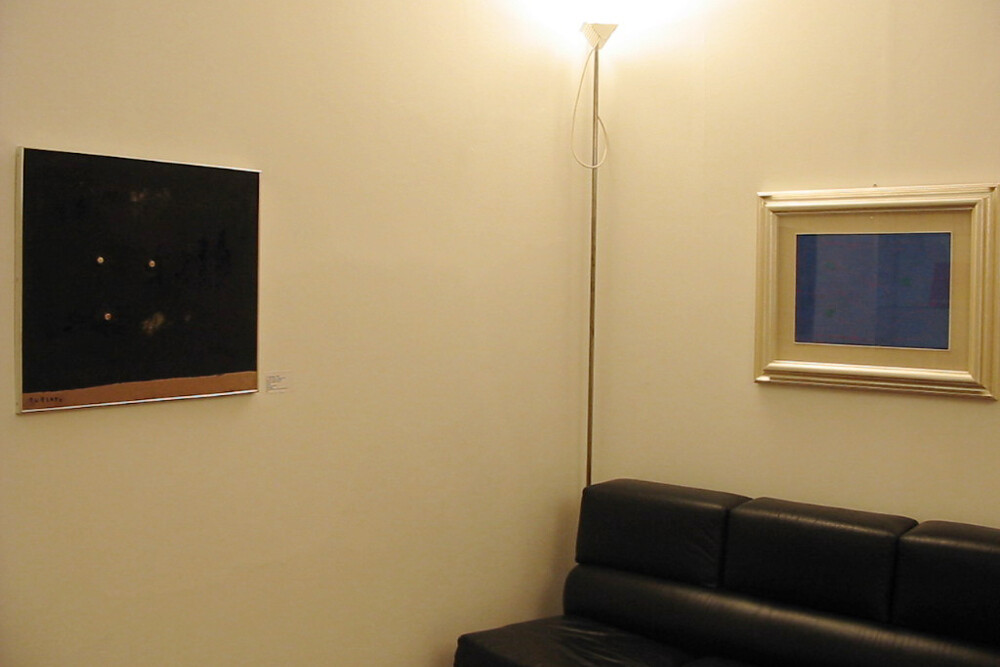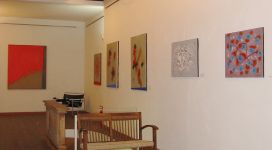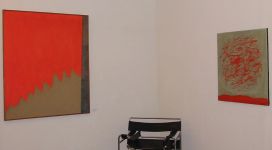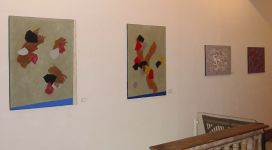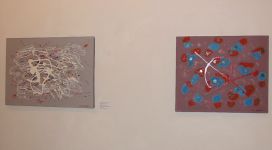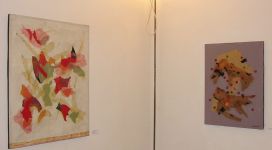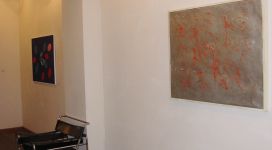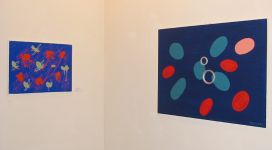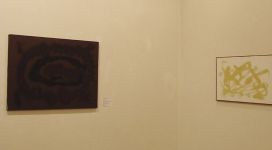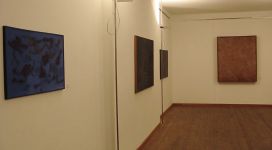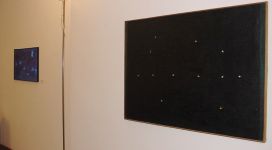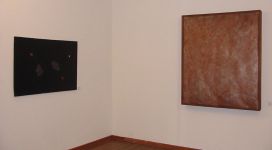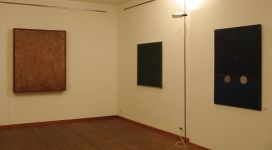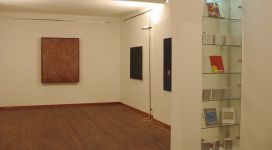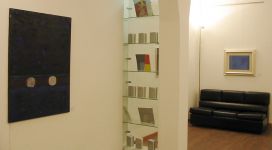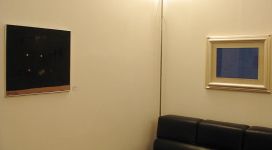| GIULIO TURCATO | Biography | |
| Paintings 1960-1980 | Catalog | |
| curated by ANDREA ALIBRANDI | ||
| 12 april – 21 june 2003 |
This substantial exhibition dedicated Giulio Turcato is a collection made up of 25 paintings which span the Sixties and Seventies.
Among the work exhibited, two of the first pieces that stand out are from 1961. These belong to the nucleus of work called Tranquillanti (Tranquillizers), coloured tablets glued onto a practically monochrome dark background, on which the elements play at constructing something approaching a constellation. Another outstanding work is from 1962 and entitled La pelle III (Skin III). Emilio Villa affirms that this was one of the images born of the evocative image of a sleeping car in the station of Charleroi. Through the windows of the compartments illuminated by the lamps inside, Turcato had glimpsed some women moving around with bare arms.
The Composizione in blu numero 2 is from 1965 and is one of the works Turcato dedicates to his Ricordi di New York (Memories of New York). And the most important of the works in foam present is the Grande paesaggio lunare (Large Lunar Landscape) (144×122 cm), one of the very first experiments made by the artist with this medium. The same year, he presented these works in foam at the 33rd Venice Biennale, in a personal show. This takes us to his Itinerari (Itineraries) and Arcipelaghi (Archipelagos) from the late Sixties/early Seventies. Here, the strokes and colour techniques such as dripping, and the collages of cut-out tissue paper and carbon paper are deployed on the light and colour of surfaces prepared with sand. The exhibition closes with some of his Cangianti (Changelings), where apparently monochrome colours, obtained with refractive materials, light up from the inside in an unexpected spark.
“Turcato, in the course of a career that spans fifty years, constructs his own free language; his sense of decoration and decorum, conceived as the elegance of the image, nurture the natural disposition for colour and light which gives dignity to the subject treated”.
